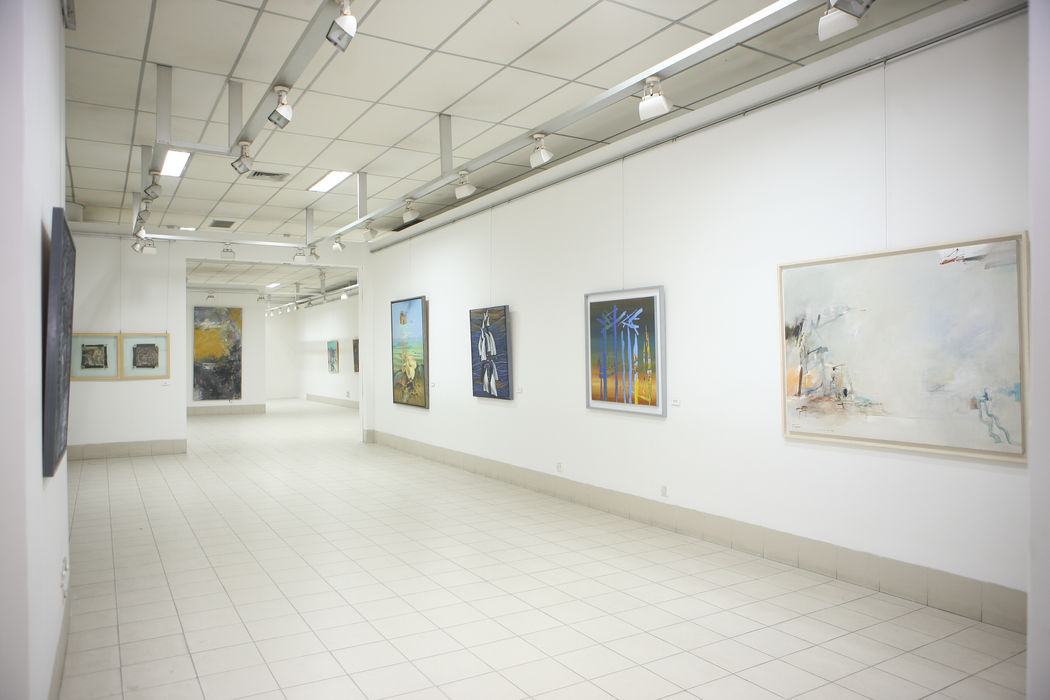This exhibition articulates a wide range of emotions and helps visualise freedom, sovereignty and free thought. Liberty -- its analytical significance -- is very much connected to the political, social and economic context of Bangladesh. Since the birth of the country, the people of the state have experienced political turmoil, religious bigotry and natural catastrophe. The people of the country lost their freedom in different periods for varied reasons. Freedom is the birthright of a man. However, we had to suffer under the shackles of slavery for long 200 years under the British colonial rule and about 25 years under the savage domination of the Pakistani rulers. Pakistani rulers treated the Bangalees with very brutal and malicious attitude. An excessive inequality was created by them in the different spheres of national life. These were made simultaneously in political, economical, social and cultural spheres. This exploitation by the Pakistani rulers caused bitterness among the Bangalees. Consequently, at one time, Bangalees crossed the limits of their patience and revolted against the Pakistani rulers. At last, the nation got freedom and relished liberty. Afterwards, the state faced several dilemmas in different phases. Specially, the artists of the country engaged themselves when the country faced any crisis. Their canvases always liberally express their thoughts, common people’s rights, and were in favour of establishing democracy and secularism in our society. The exhibition provides a chronological feature of Bangladeshi contemporary art. The show highlights the wide range of subjects but the theme of the exhibition --- “Liberty” --- is the focal point. The exhibition features several styles of different generations of painters in the country. The styles can be categorised as realistic, semi-realistic, abstract expressionism, abstract impressionism, symbolism, figurative, neo-expressionism, photo realism and more. To maintain individual languages, the painters depict rustic scenic beauty and untainted river and pastoral life, river erosion, daily chores of varied occupations, surrounding atmospheres, social and political crises, folk tradition, urban and rural life and more. A number of painters have concentrated on pure form, composition and architectural lines and texture.
The exhibition includes the artworks of the first generation of artists in the country. A few of them were directly involved with the establishment of the first art college of the country in Dhaka in 1948. The exhibition also comprised of the artworks of the painters who first went abroad to take higher education on their preferred fields in the mid 1960s. During that time, these groups of painters were greatly influenced by abstract expressionism, lyrical abstraction, pure abstraction and non-figuration. This time, artists concentrated on textures, forms, tones, especially they concentrated more on technical aspects. Though the movement of the sixties was heavily influenced by internationally prominent Abstract Expressionists like Mark Rothko, Barnett Newman, Franz Kline and Adolph Gottlieb, it paved the way towards liberalisation. Thus the present accomplishments of Bangladesh’s art owes a lot to the liberalisation.
The exhibition also includes the artists of the ‘70s, ‘80s and early ‘90s generations. The 1970s and 1980s were very significant times for the painters of our country. These generations of painters went through political turmoil and most of them were regarded as socially aware painters. It is also very noticeable that after independence, another transformation happened in our art arena. Painters felt free and their artistic creativities flowered. During the time a number of painters went for higher training in different parts of the world. Some stayed there permanently and tried to establish themselves in the new horizon. Their works are also included in the exhibition and some of these paintings highlight the blending of West and East art. Most of these works are colour and composition based.
The exhibition also includes the artworks of leading painters of early ‘90s. Their works are experimental in terms of line, form and space. Textural intensity is also emphasised in several painters’ works in the exhibition. Their working styles are bold, thought-provoking and their themes clearly reflect our political instability, religious intolerance, economic hardship and social discrimination.
Takir Hossain
Artists
Abdul Manan
Abdus Shakoor Shah
Syed Abul Barq Alvi
Ahmed Nazir
Ahmed Shamsuddoha
Anisuzzaman
Atia islam Anne
Chandra Shekhar Dey
Farida Zaman
Golam Faruque Bebul
Hamiduzzaman Khan
Hritendera Kumar Sharma
Jamal Ahmed
K. M. A. Quayyum
Kalidas Karmakar
Maksuda Iqbal Nipa
Mohammad Eunus
Monsur Ul Karim
Nasim Ahmed Nadvi
Nazlee Laila Mansur
Nisar Hossain
Ranjit Das
Rashid Amin
Samarjit Roy Chowdhury
Sheikh Afzal Hossain
Sawpan Chowdhury
Tasadduk Hossain Dulu
Kanak Chanpa Chakma
Khalid Mahmood Mithu
Nasreen Begum
Syed Jahangir
Monirul Islam
Sahid Kabir
Rokeya Sultana
Abu Taher
Mohammad Iqbal
Biren Shome
Mostafizul Haque
Saidul Haque Juise
Shahabuddin Ahmed
Aloptogin Tushar
Shishir Bhattacharjee
Zahura Sultana Hossain
Wakilur Rahman





